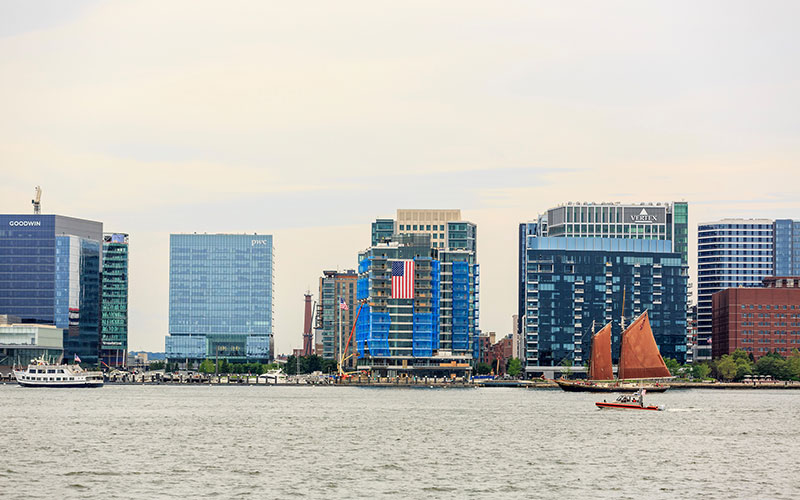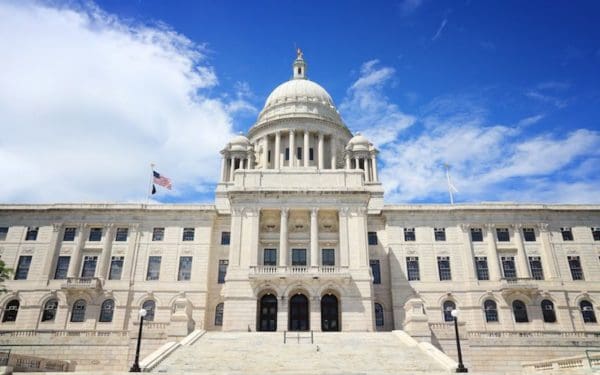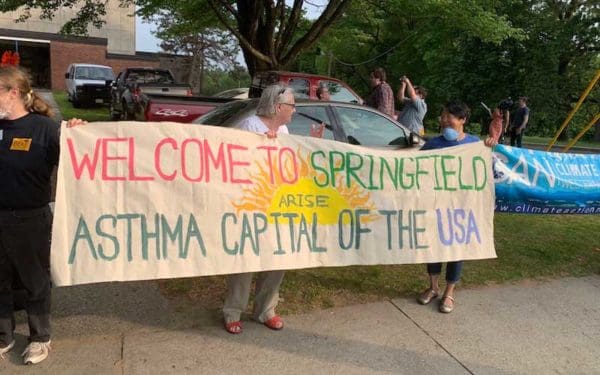
Boston's high-priced and exclusive Seaport District should serve as a reminder to other waterfront cities of what happens when public benefit takes a back seat to private gain. We're hoping leaders in Lynn are listening. Photo: EcoPhotography
Boston’s newest neighborhood, the Seaport District, has drawn recent criticism for its high-priced housing and amenities, exclusivity, and lack of diversity. What started out as an incredibly rare chance for Boston to redevelop nearly 1,000 acres of city land is now largely considered a major missed opportunity.
Given the billions of dollars of public investment (the Boston Harbor cleanup, the Big Dig, the Silver Line, and more) that turned the Seaport into such highly desirable and expensive waterfront property, it’s particularly disturbing that this economic revitalization does not benefit all Bostonians equally. Instead, a small number of Bostonians are enjoying what all of us helped pay for.
The Seaport should serve as a reminder to other waterfront cities and towns of what can happen when public benefit takes a back seat to private gain – especially in communities with underdeveloped waterfronts, like Lynn, that are now on the cusp of Boston-esque building booms.
Will Lynn Follow in the Seaport’s Footsteps or Create a Waterfront for All?
As Lynn begins the planning process to redevelop its own waterfront, city leaders face a choice: to wall off residents from the waterfront they helped pay to clean up or to prioritize public access and benefit, affordability, and diversity. With the current “Lynn Gearworks” redevelopment proposal, the city is in danger of making the wrong choice by kicking off the type of privatization we now decry in the Seaport.
The Gearworks project proposes to transform the former General Electric property, a 65-acre site located right off the Lynnway and adjacent to the River Works MBTA commuter rail station, into a sprawling new waterfront neighborhood. The project received praise for its proposed infusion of private investment and much-needed housing on a key waterfront site. But others, including us here at CLF, have raised concerns about the affordability of the proposed housing and public access to state tidelands and the waterfront.
Current Proposal Will Gate Off Lynn’s Waterfront
As proposed, the Gearworks project would create a new neighborhood, encompassing more than 1,200 residential units in six separate buildings, plus a sports club, swimming pools, a dog park, and recreational courts. All of it, however, will sit behind a “resident access gate,” restricting access to the entire property only to those who can afford to live there.
The gating off of the entire new neighborhood, separating new Lynn residents from longstanding ones, is concerning. The fact that the neighborhood is located on tidelands that are governed by state law makes its gating off even more questionable.
The state law requires the developer to provide public access not only to the shoreline but across the entire site – a requirement that seems impossible to meet given the gated nature of the development. The project does include a small “waterfront area” on tidelands that will be open to the public, but it will be smaller than a basketball court, according to a recent license application submitted to the Department of Environmental Protection. In contrast, about five times that amount of open space will be privatized and reserved for residents – all of it situated behind the gate, which is not in the spirit of the law.
A Private Station on a Public Transportation System?
The developer has also touted the promise of private investment into the River Works MBTA commuter rail station, and opening it up to the general public, as another selling point for the project. It’s true that making this commuter rail station public would be a huge benefit to Lynn residents (the station is currently only a flag-down stop used by GE employees).
But a closer look at the proposal reveals that the new station may actually be used exclusively by the residents of the gated community for a period of time before that public conversion happens. In fact, the state’s environmental review of the project states that it “will provide access to the private on-site MBTA River Works commuter rail station for its residents” and “…[the developer] is not proposing that the private station be opened for public use at this time.” If that’s the case, it will be the only private station in the MBTA system.
The developer, the City, and the MBTA insist that the intention is to convert the station to public use at some point. But with the project nearing the end of its permitting process, there is still no set “conversion” date for the station. A recent Globe article reported that considerable confusion still exists between the developer and state agencies – none of whom could give a straight answer on the private versus public use of the station.
And why wait to make the station public at all? Ultimately, a public transportation station that’s accessible only to those who can afford to buy their way into a gated community, even if it is not permanently private, is deeply troubling.
Take Down the Gate and Make the Site Accessible to All
Much like the Seaport District, the Lynn waterfront offers a rare opportunity to develop a vast amount of land into a vibrant driver of economic opportunity. But Lynn’s waterfront could be another missed opportunity if projects like this one are allowed to create private enclaves, isolated from existing neighborhoods, with minimal benefit to the public. The redevelopment of the Gearworks site presents the first of few chances to reconnect the residents of Lynn to their waterfront and create a neighborhood that folds into the fabric of the existing communities, benefiting everyone and not just the wealthy few. The fix seems relatively simple – take down the gate, make the whole site publicly accessible, and allow the public to use the MBTA station from the beginning.



